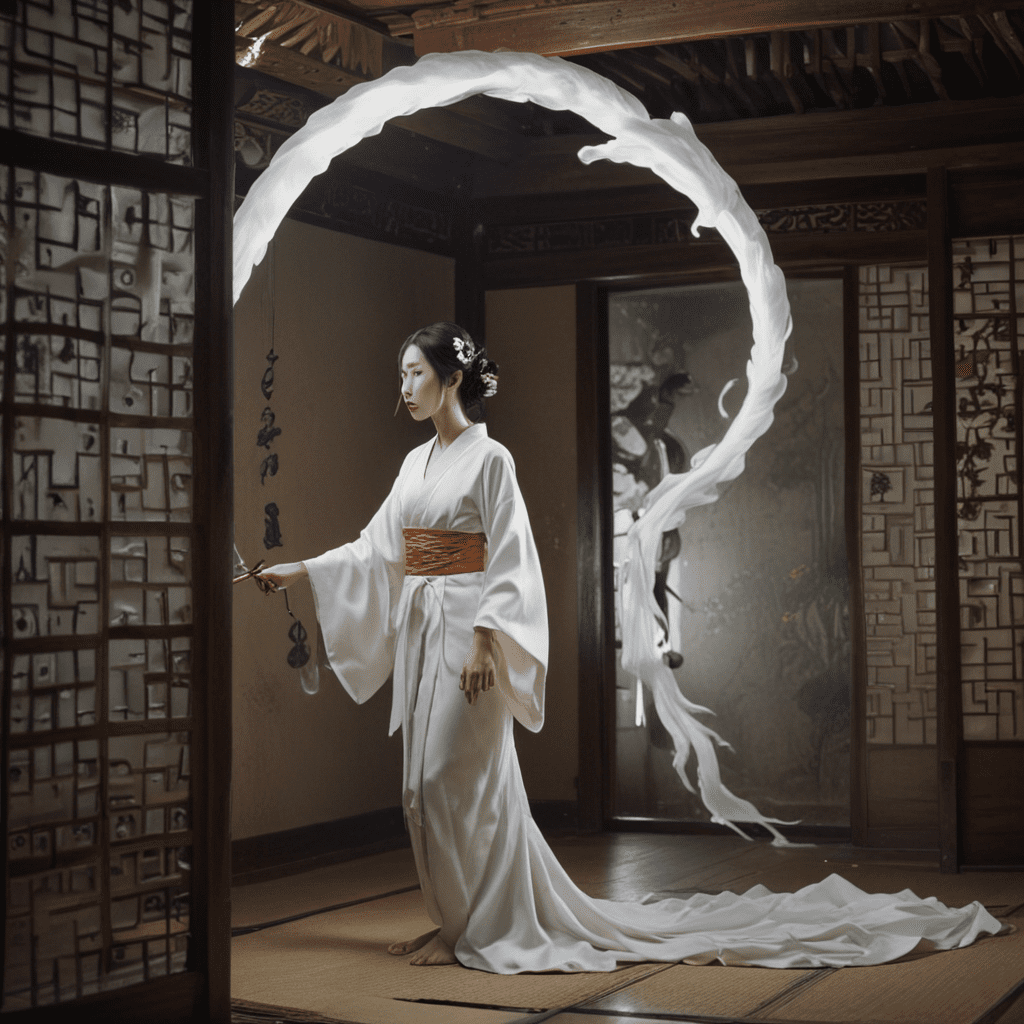The Enchanting Myth of the Rokurokubi: Unveiling the Secrets of the Long-Necked Woman in Japanese Folklore
The myth of the Rokurokubi is an enchanting tale that has captivated the imaginations of many in Japan. This mythical creature, known for its long, serpentine neck, has been a subject of folklore and ghost stories for centuries, leaving an indelible mark on the country's rich cultural tapestry.
The Rokurokubi is a nocturnal creature that typically appears as a beautiful woman in the daytime, indistinguishable from ordinary humans. However, as night falls, the woman's neck elongates to extraordinary lengths, allowing her to observe and interact with the world in a clandestine manner.
This supernatural ability makes the Rokurokubi a figure both fascinating and eerie. Her ability to transform and eavesdrop has led to numerous haunting tales, where she is portrayed as a voyeuristic figure, prying into the private lives of others. The Rokurokubi's presence often brings a sense of unease and curiosity, as people wonder about her motives and intentions.
The origins of the Rokurokubi myth are shrouded in mystery, with several theories attempting to explain its inception. Some believe that the myth originated from ancient Japanese beliefs in shapeshifting creatures, while others trace its roots to the Edo period, when storytelling and ghost stories flourished.
Regardless of its origins, the Rokurokubi myth has become an integral part of Japanese folklore, serving as a potent symbol of the supernatural and the unknown. Its enduring popularity speaks to the timeless allure of the unexplained and the fascination humans have with the creatures that inhabit the shadows.
Victims and Hauntings: Encounters with the Long-Necked Spirit
The Rokurokubi's nocturnal wanderings often lead to encounters with unsuspecting victims. In folklore, tales abound of individuals who witnessed the creature's transformation and were left terrified or traumatized by the experience. Some stories depict the Rokurokubi as a benevolent observer, simply witnessing the lives of others from afar. However, other accounts portray her as a more sinister figure, capable of causing harm or even death to those who cross her path.
Regional Variations: The Rokurokubi in Different Folklore Traditions
While the Rokurokubi myth is predominantly associated with Japanese folklore, variations of the long-necked creature also exist in other cultures. In Korean folklore, for instance, a similar creature known as the Kumiho is said to possess a long, fox-like neck that can stretch to great lengths. In Chinese folklore, a mythical creature called the Jiaolong is described as a dragon with a long, snake-like neck. These regional variations demonstrate the widespread appeal of the long-necked creature archetype in human mythology.
Symbolism and Interpretation: Unlocking the Meaning Behind the Myth
The Rokurokubi myth has been subject to various interpretations over the centuries. Some scholars view the creature as a symbol of curiosity and the desire for knowledge, while others interpret her as a representation of the unpredictable and enigmatic nature of human existence. Her ability to observe others undetected suggests a cautionary tale about the dangers of prying into private matters or secrets. Additionally, the creature's connection to the night and darkness could symbolize the hidden aspects of human nature that are often concealed from view.
Cultural Impact: The Rokurokubi in Japanese Art and Literature
The Rokurokubi myth has left an enduring mark on Japanese art and literature. In traditional Japanese paintings and woodblock prints, the creature is often depicted as a beautiful woman with an elongated neck, often engaged in voyeuristic activities. The Rokurokubi has also been a popular subject in Japanese literature, appearing in numerous short stories, novels, and plays. Modern authors and artists continue to draw inspiration from the myth, reimagining the creature in new and contemporary contexts.
Modern Adaptations: Revisiting the Myth in Contemporary Forms
In contemporary times, the Rokurokubi myth has been adapted into various forms of media, including film, television, and anime. These adaptations often explore modern interpretations of the myth, incorporating elements of horror, suspense, and even comedy. By revisiting the Rokurokubi in contemporary contexts, creators are ensuring the continued relevance and fascination of this timeless tale.
FAQs
Q: Is the Rokurokubi real?
A: The Rokurokubi is a mythical creature and has no basis in reality.
Q: What is the purpose of the Rokurokubi's long neck?
A: The Rokurokubi's long neck allows her to observe and interact with the world in a clandestine manner.
Q: Is the Rokurokubi a harmful creature?
A: In some folklore accounts, the Rokurokubi is portrayed as a benevolent observer, while in others, she is depicted as capable of causing harm or even death.
Q: Is the Rokurokubi found in other cultures?
A: Variations of the long-necked creature exist in other cultures, such as the Kumiho in Korean folklore and the Jiaolong in Chinese mythology.
Q: How has the Rokurokubi myth influenced Japanese culture?
A: The Rokurokubi myth has been a popular subject in Japanese art, literature, and contemporary media, inspiring numerous works of art, stories, and adaptations.



